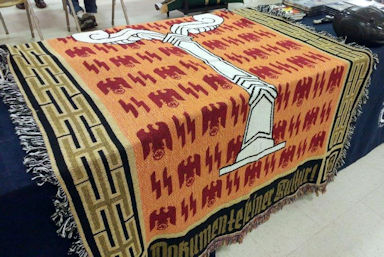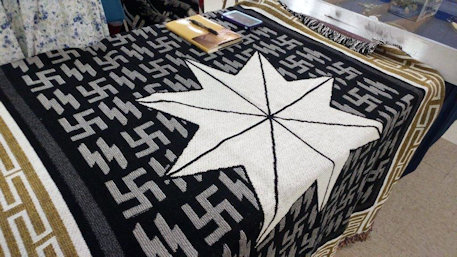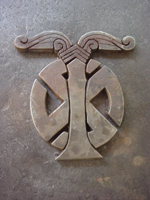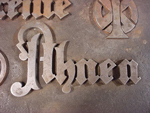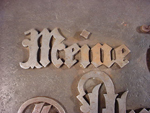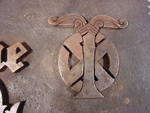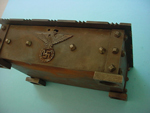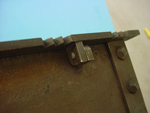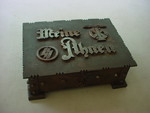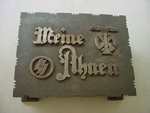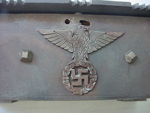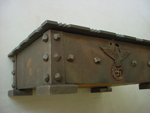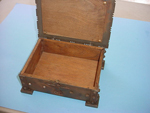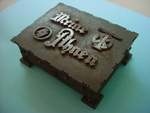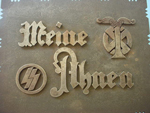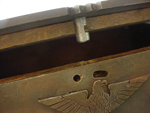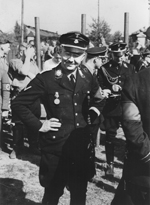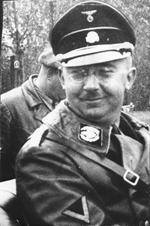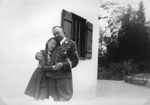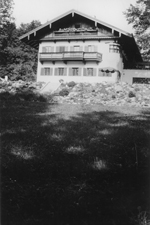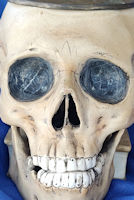|
[ Home Page ]
[ Third Reich ]
[ Old Reich ]
[ Kaiser Reich ]
[ Imperial Russia ]
[ Axis Powers ]
[ Italian Fascist ]
[ WW I ]
[ Landsknecht ]
[ Kaiser Wilhelm ]
[ Frederick the Great ]
Deutches Ahnenerbe
Page 5
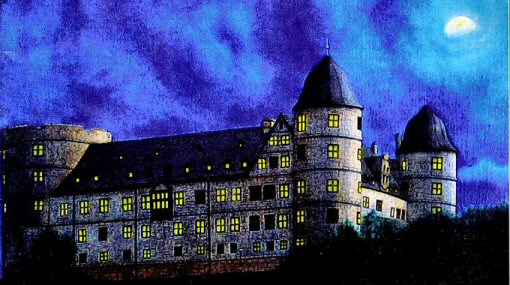
Wewelsberg Castle
Venue of various Ahnenerbe ceremonies |

The sacred Irminsul
|
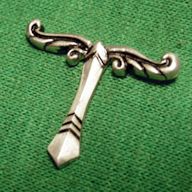
Irminsul jewelry
|
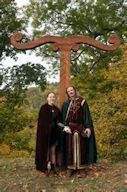
Reenactors with Irminsul
|
|
Special Teutonic Ring used by the Ancestral Heritage Foundation (Ahnenerbe) (Item AHN 5-1)
|
|
DESCRIPTION: Here is a ring that was originated in the workshop of the famed jeweler Herr Franz Schnell in Halle, Germany. You can read about this and how we acquired many rare and historically important pieces if you go to the section titled About Our Rings and Silver Insignia . This particular ring was Herr Schnell’s personal design and no other company has ever made it. He made rings of this design sparingly maybe a dozen for the Ahnenerbe and the Hitler Youth. The design comes from the ancient pattern known to and worn by the ancient Teutonic tribes such as the Cherusci. The pattern incorporates an Irminsul design that encloses an enameled swastika in the center of the branches that quite artistically come together in this beautiful pattern brought forward from the ancient world. The ring measures up and down 1 ¼ tall and about 1 inch wide. There is an “835” silver mark inside. This truly fascinating piece incorporates the Third Reich with its wonderful Teutonic mythos at forefront. This is possibly one of the rarest jewelry items of the Reich. We sold all the originals of this ring, but it was so popular that we felt compelled to arrange to have re-creations made and the one we now offer is an exact replica of the original, expensively created by a master jeweler.
PRICE: $770.00
|
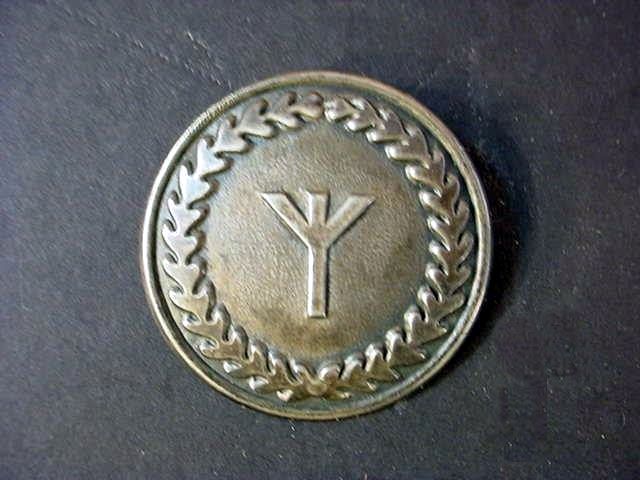
|
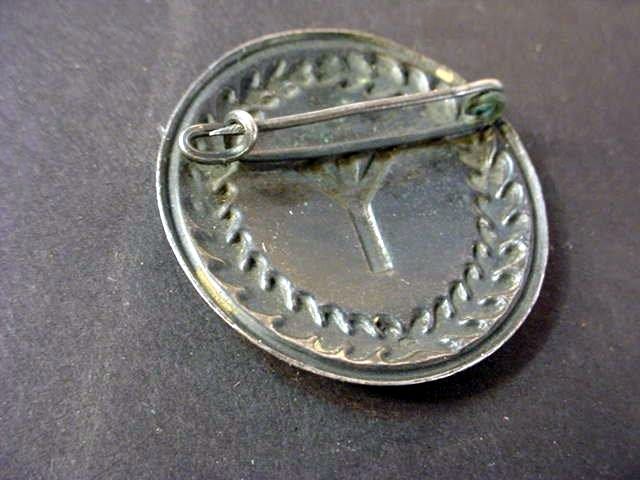
|

|
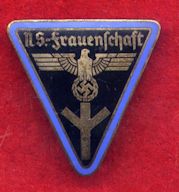
Another use for the Lebensrune
|
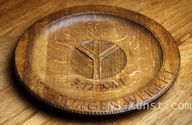
|
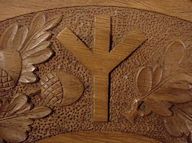
|
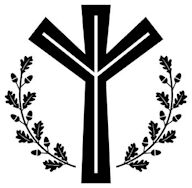
|

|
|
Deutsches Lebensrune or Life Symbol (Item AHN 5-2; GEN 15-1)
|
DESCRIPTION: Here is a brooch-style pin that was used by National Socialists and especially the Heritage Foundation the Deutsches Ahnenerbe Stiftung (Foundation). The symbol in the middle of the pin is that of the Lebensrune or Life Rune. It is the ancient Germanic representation of life itself. Even today in German newspapers in the announcement of births, you see this runic symbol next to the notice of new birth. But if this rune is seen upside down with its outstretched arms pointed down then you will see it in the obituary columns as the rune for death. Interestingly the hippie generation and the present lunk heads that followed them use the symbol with the arms pointed downwards and yet no one except their far left leaders have the slightest inkling that this definitely does not denote peace, rather it symbolizes death! It is still sad to see it so often in wartime German newspapers published during the last horrible fratricidal war and unfortunately today it is seen in this form much more than the welcome way with arms reaching up. Why? Because unfortunately there is a demographic crisis in Europe because for a nation to survive its women must produce on average 2.1 children. Europe and especially Germany has not seen that high a fertility rate since the time of the Third Reich when childbirth was government sponsored, rewarded and highly encouraged by the N.S. regime of Adolf Hitler. People were happy then and it was a time to actually strive for new birth and it was only being patriotic to the national ideals and the national duties to bring healthy children to the fore. Why? Well, in a society as the N.S., provided no one despaired in the early to late 1930s, all was a joyful state of affairs and even from 1939 to the early 1940s childbirth was normal with the exception that the men (soldiers) were away fighting for their nation and this somewhat curtailed the average. Still, the Germanic people were not as depressed as they are today in the “New World Order.” Today the places of Europe’s white unborn are being filled by growing concentrations of unassimilated and disaffected Muslim immigrants segregated in ghetto-type “neighborhoods,” but these people realize that in order to completely conquer it will take numbers, and millions of births today in the shadow of the total defeat of the Third Reich and its ideals and Aryan agenda (There, I said it and I will say it again). Sadly, today, Europeans are an aging, shrinking, disappearing, dying race. Christianity gave Europe its faith purpose and will. Christianity gave us Europe, National Socialism gave Europeans an intense pride and a will that was practically indomitable. With both systems gone there seems to Europeans that there is virtually nothing to fight or die for, or to give new life to a world that is now dark, dangerous, and anything but pious. So look at this Lebensrune and imagine what might have been if things had gone differently . . . .
The Pin
It measures about an inch and three quarters in diameter and is made in a light, metal alloy. The leaf border and the rune are in slight relief. The securing pin on the back is mounted in the usual manner of Tag Abzeichen
(day badges). Pin is in top-grade condition.
PRICE: $350.00
|
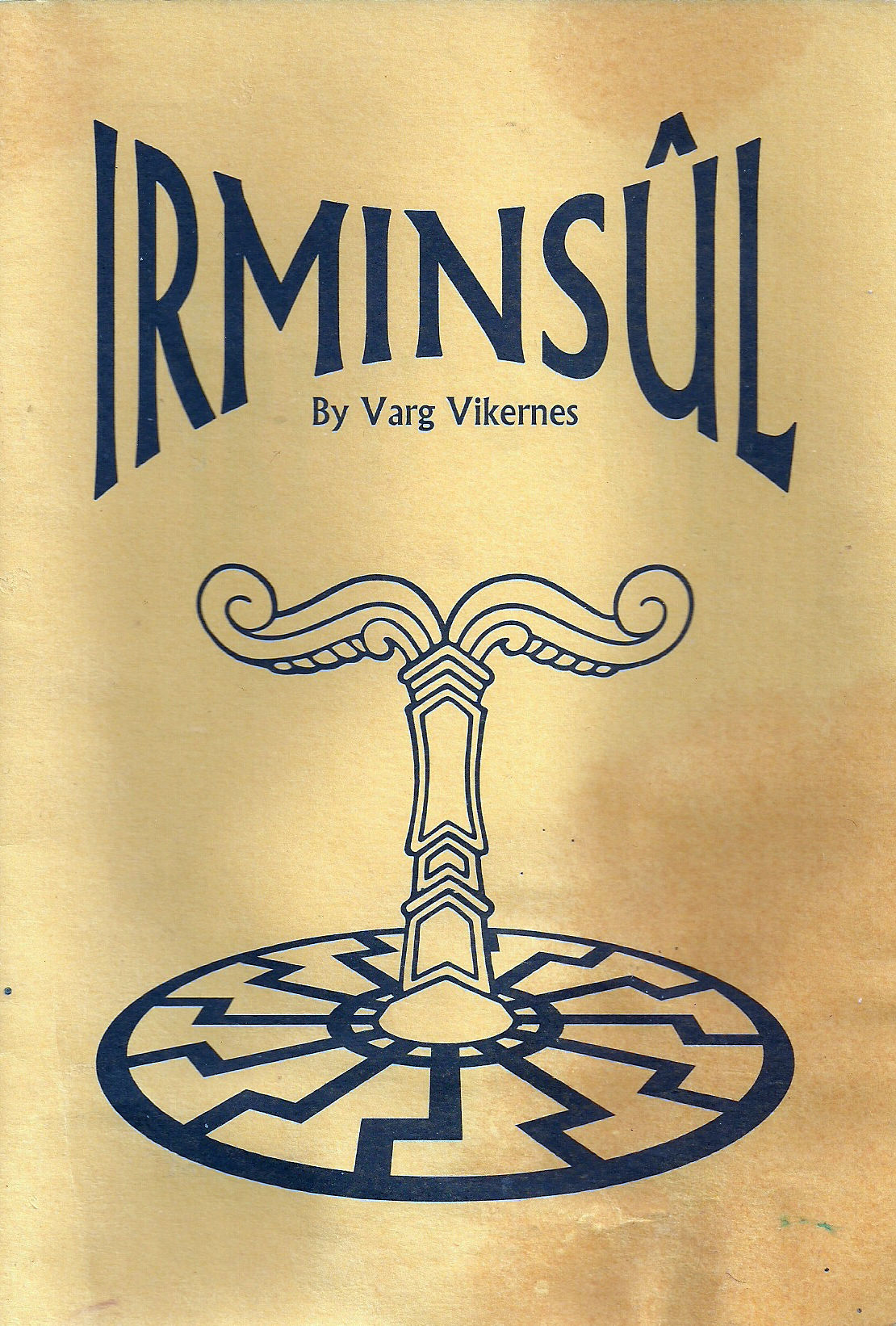
A book that further explains the Irminsul. This is not offered with the tapestry, but you can read about it by entering "Irminsul" with the author's name to your favorite search engine.
|
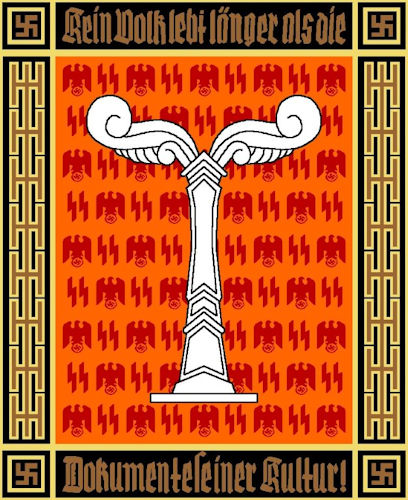
This is the re-created tapestry that we offer; it will have fringed edges. Here is a marvelous opportunity to own such an important and esquisite artifact.
|
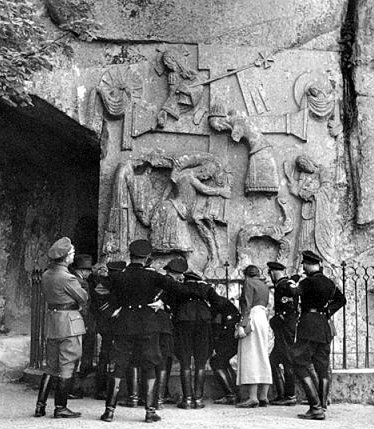
 ceremonies at the Extersteine. Note the bent-over Irminsul. ceremonies at the Extersteine. Note the bent-over Irminsul.
|
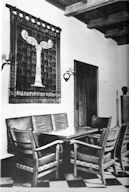
Entrance hall of the  -Ahnenerbe offices in Berlin. -Ahnenerbe offices in Berlin.
Here you can see the original Irminsul tapestry as it hung there.
|
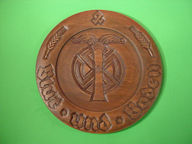
Irminsul bread plate
|
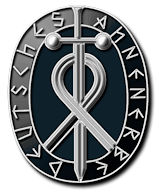
| 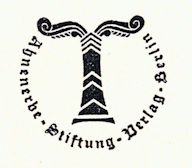
This symbol appears on all  -Ahnenerbe stationary. -Ahnenerbe stationary.
|
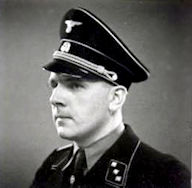
 -Standartenführer Wolfram Sievers -Standartenführer Wolfram Sievers
General Secretary of the  -Ahnenerbe -Ahnenerbe
|
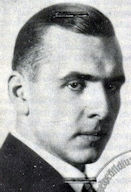
Wolfram Sievers
Director of the  -Ahnenerbe -Ahnenerbe
|
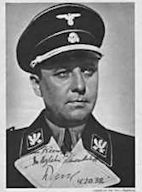
Dr. Walter Darré, Racial Theoretician
The first patron of the  -Ahnenerbe -Ahnenerbe
|
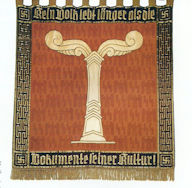
The original Ahnenerbe tapestry as found
|
|
Superb Re-creation of the Famed Ahnenerbe Tapestry with Irminsul (Item AHN 5-3; ART 18-2; RECTAPESTRY 1-9)
|
DESCRIPTION: Here we proudly present a fantastic replica of the tapestry that hung in the foyer of the Ahnenerbe-Stiftung Verlag in Berlin. This was the ancestral heritage institution that was the pet project of SS-Reichsführer Heinrich Himmler. Established by Himmler in 1935, this was an academy and society concerned with prehistory. See on our site the SS-Ahnenerbe ring and the Third Reich Ahnenerbe section AHN1-1. This was certainly the most-learned group within the National Socialist structure. Its members studied all the beginnings and ancient culture of the Teutonic people and kindred races. Among expeditions of Ahnenerbe personnel that were conducted were trips to Tibet and other far-off lands. The original tapestry was found to have been designed by professor and Oberführer-SS Karl Diebitsch and constructed by his sister Else Seifert. Much about Herr Diebitsch can be seen by going to Wikipedia and you can also go to our site and see original tapestries by Diebitsch and others by going to the Third Reich section and then to the subject SS and N.S. tapestries. Having owned the original of this tapestry we at Germania became rather enamored with it and the importance of it so we decided to commission a replica of it and that is what we presently offer. The piece came out in superlative form; the only difference, of course, is size and the copy has fringes all around the edges as it is truly an afghan in nature.
The Tapestry and the Irminsul
The words that are seen top and bottom of the tapestry are “Kein Volk lebt länger als die Dokumente seiner Kultur”–“No people live longer than the documentation of their culture.” This statement was pronounced by Adolf Hitler on the occasion of the opening of the Munich art museum Haus der Deutschen Kunst on 18 July 1937. Karl Diebitsch knew that no more fitting words could ever be more appropriate for this Ahnenerbe tapestry and for its central motif he chose the Irminsul. This was a sacred pillar-like object that played an important role in the Germanic paganism of the Saxon people. It represented the Saxon Tree of Life that held up the circumpolar stars and the immortals of the heavens—the stars that kept time for the ancients and is represented in all Caucasian tribes from the Teutons, Celts, Romans, Greeks and Egyptians. The swastika, was one of our oldest Aryan symbols. This sacred Irminsul was said to have been at the top of the Extersteine near Detmold, Germany. This is a very famous rock formation that magnificently and mysteriously juts up from the ground, and was a place of worship for the ancient Teutons. Ahnenerbe archaeologist Wilhelm Teudt in 1929, interpreted much in his studies about the connection between the Irminsul and the Extersteine. In 1934 and 1935, the SS Ahnenerbe undertook extensive fieldwork in an attempt to uncover material evidence of the use of the Extersteine as a place of pagan worship. The rocks came to have great spiritual meaning to the SS in general and many SS sponsored trips by German citizens were offered, and certain reenactments and SS ceremonies were held there. On the area considered the front of the rock formations can be seen a Christian relief carved into the rocks and dated to the early ninth century. It is a crucifixion scene. If one looks closely at Nicodemus as he helps to lift the crucified Jesus from the cross he seems to have stood on the bent Irminsul as a symbol of triumphant victory for Christianity. The artist K. Diebitsch and Wolfram Sievers, who was the managing director of the Ahnenerbe and rose to rank of SS-Standartenführer, decided to reerect the Irminsul in keeping with their immense interest in bringing the past to the present and the future. The Irminsul became the official seal of the Deutsches Ahnenerbe. The tapestry we offer is huge and measures 74 x 54 inches. It’s 100-percent American made cotton and prewashed for softness and washable in cold water. It has four different types of special stitching and threads (This is not a print on fabric!). All is woven and absolutely awe inspiring when properly displayed. By using this type of weaving there is almost a 3D effect. The colors, the quality of artwork is in a word–SUPERB! The original was sold over 20 years ago for more than $22,000. You can consider this offer to be Germania’s service to history.
PRICE: SOLD
|
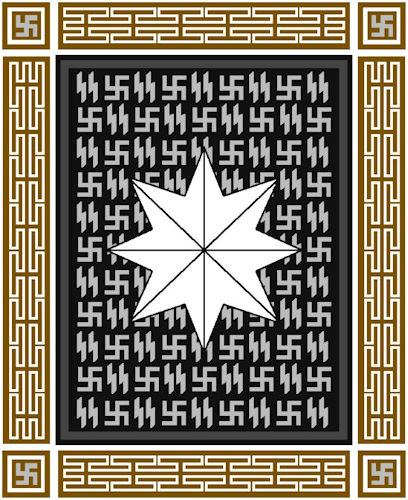
|
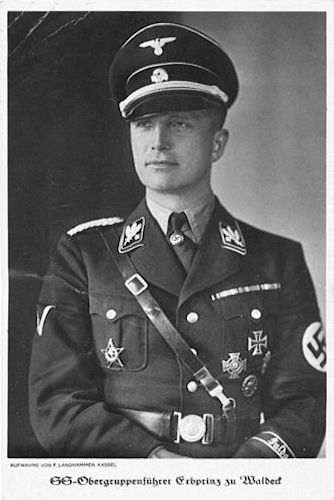
Prince Josias in SS uniform
|
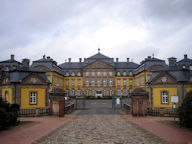
Arolsen Castle in Bad Arolsen, Hesse, Germany
|
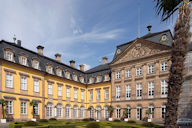
View of the Inner court of the castle
|
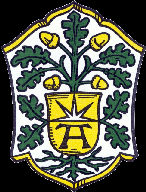
Star of the Arolsen crest as used today
|
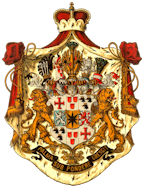
Waldeck und Pyrmont Coat of Arms.
Note the Arolsen star in the center
|
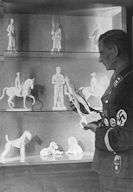
Professor Karl Diebitsch at the SS Allach showrooms
|

The prince as  -Obergruppenführer (general) -Obergruppenführer (general)
|
|
Super Re-creation of the  Tapestry of SS-Obergruppenführer and Hereditary Prince Josias von Waldeck und Pyrmont (Item AHN 5-4; RECTAPESTRY 1-10; ART 18-3) Tapestry of SS-Obergruppenführer and Hereditary Prince Josias von Waldeck und Pyrmont (Item AHN 5-4; RECTAPESTRY 1-10; ART 18-3)
|
DESCRIPTION: Here is a re-creation of the tapestry that hung in the office of a royal prince of a royal German house. Prince Josias was one of the earliest members of the SS, and one of the first of the royal lines to join the ranks of the Schutzstaffel. The Erbprinz (“hereditary prince”) had an extraordinary and varied career and enjoyed an especially close relationship with Heinrich Himmler. He was born in Arolsen at the ruling family's castle, as the eldest son and heir of Prince Friedrich of Waldeck and Pyrmont, and his consort Princess Bathildis of Schaumburg-Lippe. He was the nephew of William II, King of Württemberg, and Emma of Waldeck and Pyrmont, Queen Regent of the Netherlands. He was badly wounded in WWI (including being a victim of a gas attack) and highly decorated receiving the Iron Cross First and Second Class and other decorations. He later volunteered for the Free Corps, (Freikorps) where he fought in Upper Silesia against the communists in 1919. Josias joined the Nazi Party in 1929, and the SS in 1930. He had married one of the sisters of the Hereditary Grand Duke Nikolaus of Oldenburg (1897-1970). Von Oldenburg’s two sisters married an SS major who was a prince of Schaumburg-Lippe; and SA Colonel Harald von Hedemann, making this a tight-knit circle of aristocratic NSDAP officials. During his first year in the SS, Josias became the chief of Himmler’s personal staff. Later, in 1933, he became the aide-de-camp of SS General Sepp Dietrich, who headed up Hitler’s personal security. That same year, he was promoted to major general (SS-Grüppenführer); this was part of his precipitous rise in rank. He also had a brief appointment as a counselor in the foreign office in 1933, and held a seat in the Reichstag throughout the era of the Third Reich. As of 1936, he headed the SS division of Fulda putting him in close proximity to Prince Philipp of Hessen, who was also an NSDAP royal and a high-ranking SA leader. Both Prince Josias and Prince Philipp were based in the city of Kassel. In Kassel, Josias created the Bureau for the Germanization of Eastern Peoples, which promoted the idea of SS-directed settlements in Eastern Europe. In 1939, he was appointed the higher SS and police leader in Weimar and in this capacity he had supervisory authority over the concentration camp at Buchenwald. The prince was also a general of the Ordnungspolizei (“regular police”) being personally appointed by Hitler in April 1941. Prince Josias was severe, hard driving, and ambitious. To cite an example, he oversaw an SS execution commando action at the Stadelheim Prison near Munich during the Röhm purge in June 1934, when he had to order the executions of several former comrades. It gave him no pleasure, but it was necessary to the future of the NSDAP, which he would defend with his own life, if necessary: “Wenn alle untreu werden, so bleiben wir doch true”: the  motto meaning: “If all become unfaithful, we remain loyal.” The city of Kassel was the main headquarters of the prince, but the SS-Oberabschnitt Fulda-Werra, headed by Josias, was in the town of Arolsen. The stately Arolsen Castle, which continues to serve as the family home of the former ruling family of the Principality of Waldeck and Pyrmont, is also located in Bad Arolsen. The innermost offices of Prince Josias were in the castle itself and the original of this tapestry that we offer graced the wall of his personal office in that regal castle. The symbol of the eight-pointed star—seen in different forms—is seen in the coat of arms of Arolsen; sometimes, the Waldeck arms are shown with a six-pointed star, but the prince chose to have the eight-pointed version on his personal tapestry. Note: the tapestry, like the famed Ahnenerbe example, has in its borders a series of geometric patterns that resemble a continuous pattern comprised of the letter “H” joined. Was this in honor of Heinrich Himmler? The background of the tapestry is decorated with alternating swastikas and motto meaning: “If all become unfaithful, we remain loyal.” The city of Kassel was the main headquarters of the prince, but the SS-Oberabschnitt Fulda-Werra, headed by Josias, was in the town of Arolsen. The stately Arolsen Castle, which continues to serve as the family home of the former ruling family of the Principality of Waldeck and Pyrmont, is also located in Bad Arolsen. The innermost offices of Prince Josias were in the castle itself and the original of this tapestry that we offer graced the wall of his personal office in that regal castle. The symbol of the eight-pointed star—seen in different forms—is seen in the coat of arms of Arolsen; sometimes, the Waldeck arms are shown with a six-pointed star, but the prince chose to have the eight-pointed version on his personal tapestry. Note: the tapestry, like the famed Ahnenerbe example, has in its borders a series of geometric patterns that resemble a continuous pattern comprised of the letter “H” joined. Was this in honor of Heinrich Himmler? The background of the tapestry is decorated with alternating swastikas and  runes, while the Irminsul Ahnenerbe tapestry has in it a background with alternating N.S. eagles and runes, while the Irminsul Ahnenerbe tapestry has in it a background with alternating N.S. eagles and  runics. We believe this is rather evidentiary that both of these tapestries were designed by the famed SS-Oberführer and Professor Karl Diebitsch, the originator of the SS Allach porcelain firm. More information about professor Diebitsch and the Ahnenerbe can be found at on this site here. So, dear collector, here is a chance to procure a great and accurate replica of a very important relic of the Reich. runics. We believe this is rather evidentiary that both of these tapestries were designed by the famed SS-Oberführer and Professor Karl Diebitsch, the originator of the SS Allach porcelain firm. More information about professor Diebitsch and the Ahnenerbe can be found at on this site here. So, dear collector, here is a chance to procure a great and accurate replica of a very important relic of the Reich.
PRICE: SOLD
Below are images of the SS Irminsul and the SS Arolsen tapestries
that were featured at a recent military show.
You can see the fringe that lines the edges of the pieces.
These magnificent tapestries are really limited so please act now.
|
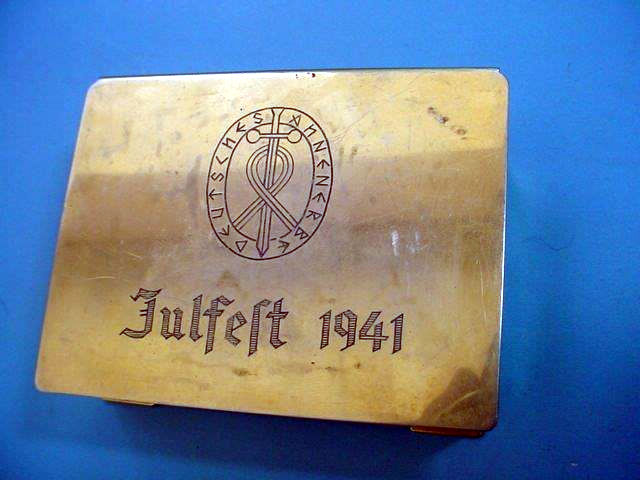
|
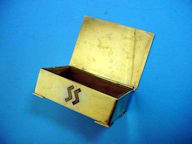
|
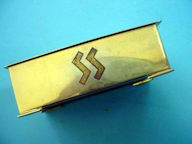
|
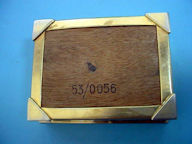
|
|
Small Julfest Box from the Ahnenerbe Stiftung in Berlin (Item AHN 5-5)
|
| DESCRIPTION: This is a Julfest gift box that was given to staff members of the Ahnenerbe. The Julfest was from the old Germanic celebration of the midwinter ceremonies that were held wherever the ancient Germans gathered. Scholars also have connected this Jul to the wild hunt of the Nordic gold Wotan and of course the summer solstice. It was a pagan celebration, but Christmas was celebrated right along with Julfest by the National Socialists, but there was always an attempt to disassociate Christmas from Jewish origins; in other words, Old Testament saga. However, church and private celebrations remained Christian in nature. The Ahnenerbe or Heritage Foundation lent its beliefs and teachings toward a resurgence to the ancient Nordic ways. They attempted to actually rename Christmas to Julfest. Hitler remained a Christian as did Herman Göring and many other N.S. Leaders. Heinrich Himmler, founder of the Ahnenerbe, leaned toward the ancient pagan ways and ceremonies. The Ahnenerbe under leadership of SS-Reichsgeschäftsführer or managing director Wolfram Sievers would often present Julfest presents to his loyal staff. This small, brass box could be the actual gift or it was possibly the presentation container for something else inside??? We may never know. The box is petite in size 3¾ by 3 inches across the hinged lid and 1-inch deep. It has a stamped number “53/0056” on the wooden bottom. The top has an engraving of the Ahnenerbe logo that has the sword superimposed within the oval configuration containing the words “Deutsches Ahnenerbe” in runic-looking letters. Under this is engraved “Julfest 1941.” On the front you can see the special SS runes used only with this academic organization. On the left side of the box appears the Sonnenrad or sun wheel swastika, while the right side has the Odel rune that became the most sacred rune of this fantastic study group. Here is a very rare historic treasure. Small, but ultrarare and a super find. Ahnenerbe items are so difficult to find and this one is, in a word, precious.
PRICE: SOLD
|
|
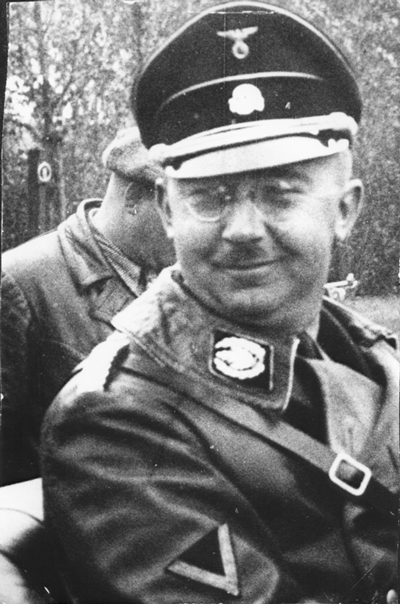
Reichsfürher SS Heinrich Himmler |
|
|
|
Iron Chest from the Home of Reichsführer SS Heinrich Himmler (Item AHN 5-6; SS 35-3; HH 4-19) |
DESCRIPTION: This chest is constructed from iron with a wooden interior. It is probably one of the finest pieces of Himmler-related items ever found. It was taken from the home of the Reichsführer SS at Gmund in Lake Tegernsee in 1945 by an American soldier (looter). This was the same villa that the chair came from that we feature in the Himmler section of our site. The box is measured at 10" x 8" across the top and 3 ½" deep counting the feet. The design is indicative of the work of the SS Ahnenerbe. (See our explanation of this Heritage Foundation as well on our pages. There is a wealth of information there.) You can also put the word, ‘Ahnenerbe’ into Google and much more can be extrapolated. The words’ “Meine Ahnen” are to be seen in cut-out iron letters on the top of the chest -- this translates to My Ancestry; on the right side is a figure that represents the Irminsul with the “Sonnenrad” (sun symbol) behind it with Swastika (It was the sacred symbol of the Saxons.) In the left lower section you can see a stylized SS symbol in a circle. The Ahnenerbe was the favored pet project of Heinrich Himmler and many gifts were bestowed upon him at his birthday, anniversaries and just about every time he would be visited by officials of the organization including, of course, SS Standartenführer Wolfram Sievers; he was the official chairman of the Kuratorium and he held the real power in the organization. The foundation had several (50) different departments all with various agendas. Expeditions to Tibet and other far flung places, Germanic music, excavations, medical department studies, having to do with nutrition and folk medicine, farming innovations, the social sciences as well as natural science were exhaustingly covered, studies of the Celtic and Nordic culture. One of the departments was for the study and recreation of Germanic art and it was here that they created items that were important to the Nordic mythos. Teutonic swords, and daggers shields, etc. Here also such items as this chest would be created using pagan and symbolic designs that would reflect the importance of ancestry and the dedication to the National Socialist principles and ideals. This brings us to the fact that this would have been the perfect gift for Himmler because for all intents and purposes it really says it all! On the front of the chest is an N.S. eagle and swastika of the style used in the earliest days of the N.S. movement (in the mid 20’s), this is also fashioned in iron. It is in keeping with all the rest of the design when one considers the full meaning of the gift. The stylized SS also has meaning in the fact that the Ahnenerbe was under the directorship of the general secretary and SS Standartenführer, Seivers, who was keenly interest in the evolvement of the swastika and the SS symbolism from ancient times. The "S" was used on Teutonic war shields and weapons and under Siever's directives,various patterns of the usage of SS were used, so this rather different usage and design on the chest’s top is to be expected in an Ahnenerbe production.
We are quite certain that this gift was actually from this much acclaimed academic group. When the GIs broke into the house in Gmund, on the shores of Tegernsee, this chest was taken along with many other items. Thinking that the box contained jewels or other precious objects, the looters couldn’t contain their lustful greed. There was a key sitting right in the lock but it would have had to be turned and then re-inserted in another hole beside it and turned again and the lock would have opened easily but since they were lusting heavily to open it, they never even noticed the second hole and since it would not open for them, they forced it open with a bayonet thereby destroying the lock. You can see in our picture the two lock entry points. This chest was kept in the Gmund residence in a closet and undoubtedly contained papers and/or microfilm having to do with the ancestry of the Reichsfuhrer. When the box was opened by the looters, there was consternation and great disappointment. The contents were stupidly thrown in a trash barrel by the GIs without a thought of their importance to history and the chest was carried away by the “grunts.” Carefully, so that the intelligence officers would not see it because if they had the chest would have been seized and the contents might have still been able to be rescued. There was strict orders that no looting was to be permitted, especially at this residence. So, that is the story as relayed to us by the son of the veteran who prefers to go unnamed. This is an exiting relic of the SS and of its leader. It also is very important in that it is from the Ahnenerbe and that is so crucial to the understanding of one of the admittedly positive aspect of the Third Reich. Obviously extremely rare and certainly a valuable relic of the Reich.
PRICE: SOLD
|
|
|
|
Student Beer Drinker’s Skull Stein (Item AHN 5-7; SS 38-39)
|
| DESCRIPTION: Student Beer Drinker’s Skull Stein
This is not a Third Reich item; however, the skull in the militaria of many European nations has been used to convey a simple message: the soldier will fight to his death for his country, the skull signifying him. It is NOT a pirate symbol, which was an entirely different concept. The Germans throughout their history and especially in WWII emphasized this more than any other military that they were literally dead serious about their country. They knew Bolshevism would take the earth if allowed. The SS with their Honor Rings used the skull symbol in all seriousness. These steins have a very similar heritage. These have been popular since the Middle Ages, but made a huge comeback in Germany in the late 19th century amongst students, particularly medical students. These porcelain steins were made by the Rudolstadt factory of E. Bohne Sohne of Germany. The sides bear the Latin phrase Gaudeamus igitur juvenes dum sumus taken from a 13th century Commersbuch or drinking song book. The phrase translated is “Let us therefore enjoy life while we are still young.” The stein, in its macabre way, like the Honor Ring, conveys that the ultimate end is death. For the soldier, that was the possibility on the battlefield and the stein for what will occur to all at some point. The stein is in perfect condition with the Bohne hallmark on the bottom. It is anatomically correct with the squamous and lambdoid sutures presented, while the lid, which lifts up, has the coronal suture neatly in place. It is 5½ inches high (the thumb lift adds another 2 inches) by 8 inches long. It teaches a lesson to not take life for granted, although I don’t think the Latin phrase meant gorging oneself on beer!
PRICE: SOLD
|
|
|
|
Ahnenerbe Irminsul Ring (Item AHN 5-8)
|
| DESCRIPTION: This is an extremely rare ring. As you can see, it shows the sacred Irminsul and on one side of the shank is the swastika and the other side shows the SS runes. It is a size 10 and presents with great patina. Cleaning it will be make a beautiful ring. It is “835” silver and was probably issued by the Ahnenerbe or custom made by one of its historians. All in all, it’s a most handsome and historical, heavy, man’s ring.
PRICE: $1,200.00
|
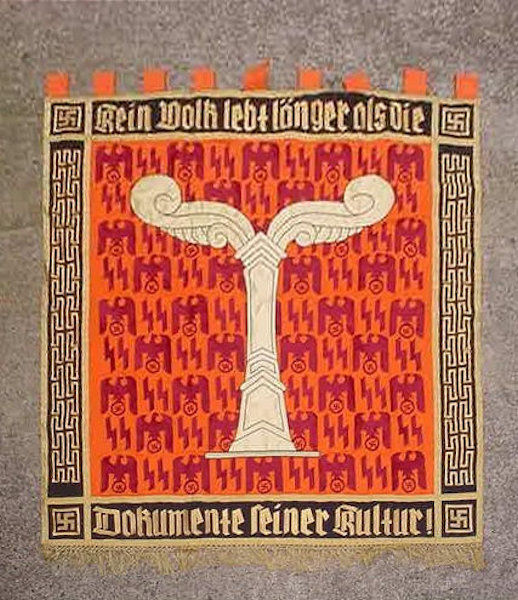
|
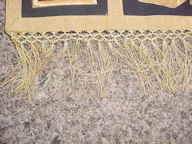
Note the beautiful fringe work
|
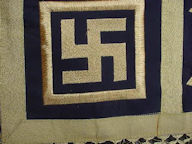
Flat, machine weave
|
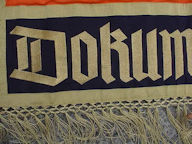
Flat, machine weave
|
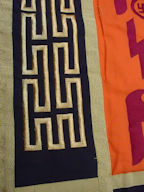
Possible hand weave
|
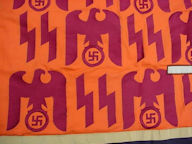
Flat, machine weave
|
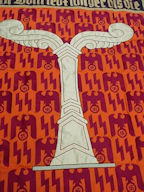 < <
|
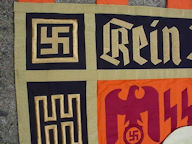
A mixture of skillful weaving styles
|
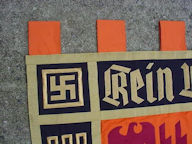
Sturdy suspension loops
|
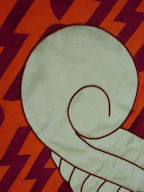
Appliqué–handmade
|
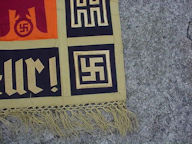
|
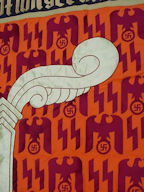 < <
|
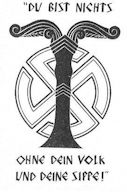
Ahnenerbe slogan with Irminsul
|
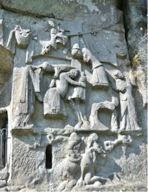
Note the revered Irminsul bent over in the Christian carving on the rocks of the Externsteine
|
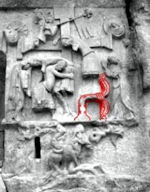
Depiction of the revered Irminsul bent over in the Christian carving on the rocks of the Externsteine
|
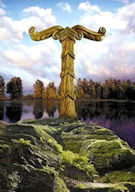
|
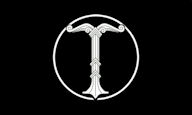
|
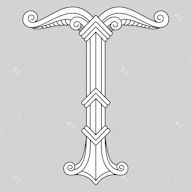
|
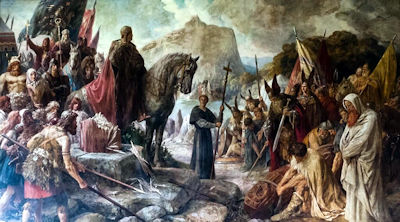
Read about the ancient Irminsul, here.
|
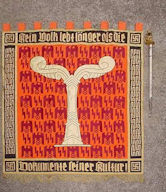
Large sword seen here is placed to show
viewer size perspective
|
|
Large and Accurate Re-creation of the Original Irminsul Tapestry of the  -Ahnenerbe-Stiftung (Item AHN 5-9; RECTAPESTRY 1-11) -Ahnenerbe-Stiftung (Item AHN 5-9; RECTAPESTRY 1-11)
|
DESCRIPTION: With intense study and research we have re-created the SS-Deutsches Ahnenerbe tapestry to exact specifications. This could be said to be the most famous and historically important memorial to Germany’s ancient and noble past. In the sections on this site above you will see various items and written passages concerning the Deutsches Ahnenerbe academic organization that made far-reaching inroads and intensive studies including many far-flung expeditions enabling research into Teutonic culture. Its anthropological studies marked the beginnings of the Nordic, and studies still refer to it in academia today: in other words, the rich heritage of the Germanic people. What better symbol to be the masthead or logo of this learned society than the ancient Irminsul. You can garner much information about the Ahnenerbe by going into your favorite search engine, or looking at other entries on this section of our Germania site. When there, please read between the lines and remember the victors at the end of the world conflict are given to writing the history of the war and seldom are generous to the vanquished! Why a re-creation of the  -Ahnenerbetapestry and why did we endeavor to enter into this project? The piece is 72 x 72 inches not counting the fringe—roughly 6 ft. x 6 ft. Very impressive! This re-creation is right on as to color and design. We offer it at an extremely reasonable price because our reward was never sought to be in monetary terms, rather it was a great and distinct pleasure in adding one more manifestation of this wonderful tapestry to world history. Our advisor, Mr. Johnston, was the discoverer of the original tapestry that was sold some 25 years ago. Mind you there was only ONE original that hung in the office of the SS-Ahnenerbe in the Dahlemstrasse in Berlin. Please read the history of the IRMINSUL as well on our pages. If you are fortunate enough to procure this momentous historical article this will be evidence that one is a true “Bewegungsglauber” and not merely a accumulator of jackboots, bayonets, and field packs. This is the path of the true “Kulturträger.” -Ahnenerbetapestry and why did we endeavor to enter into this project? The piece is 72 x 72 inches not counting the fringe—roughly 6 ft. x 6 ft. Very impressive! This re-creation is right on as to color and design. We offer it at an extremely reasonable price because our reward was never sought to be in monetary terms, rather it was a great and distinct pleasure in adding one more manifestation of this wonderful tapestry to world history. Our advisor, Mr. Johnston, was the discoverer of the original tapestry that was sold some 25 years ago. Mind you there was only ONE original that hung in the office of the SS-Ahnenerbe in the Dahlemstrasse in Berlin. Please read the history of the IRMINSUL as well on our pages. If you are fortunate enough to procure this momentous historical article this will be evidence that one is a true “Bewegungsglauber” and not merely a accumulator of jackboots, bayonets, and field packs. This is the path of the true “Kulturträger.”
PRICE: $895.00
|
Contact Us
Please refer to item designator in parentheses in all correspondence.
Please E-mail for any additional information you may need.
If you prefer, contact 'Germania' at PO Box 68, Lakemont, GA 30552
or call at 706.782.1668.
Please! do not call during the wee hours of the morning. The best time for calling us is between 10am and 12 noon and between 9 and 11 pm eastern time.
| | | | |



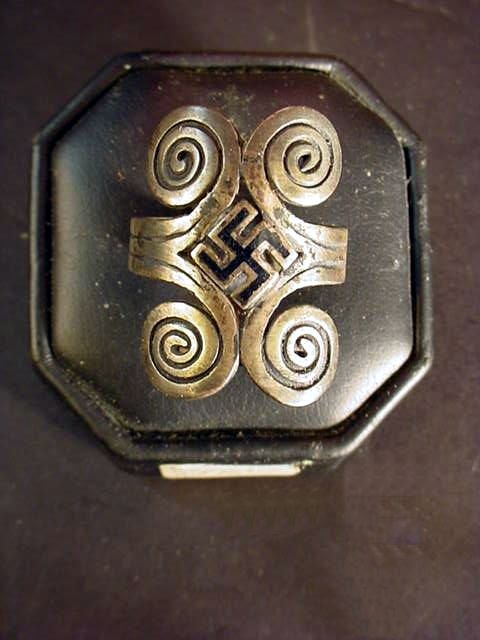
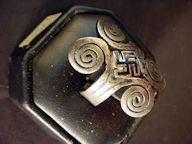
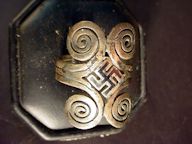
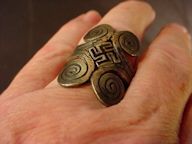














 ceremonies at the Extersteine. Note the bent-over Irminsul.
ceremonies at the Extersteine. Note the bent-over Irminsul.















